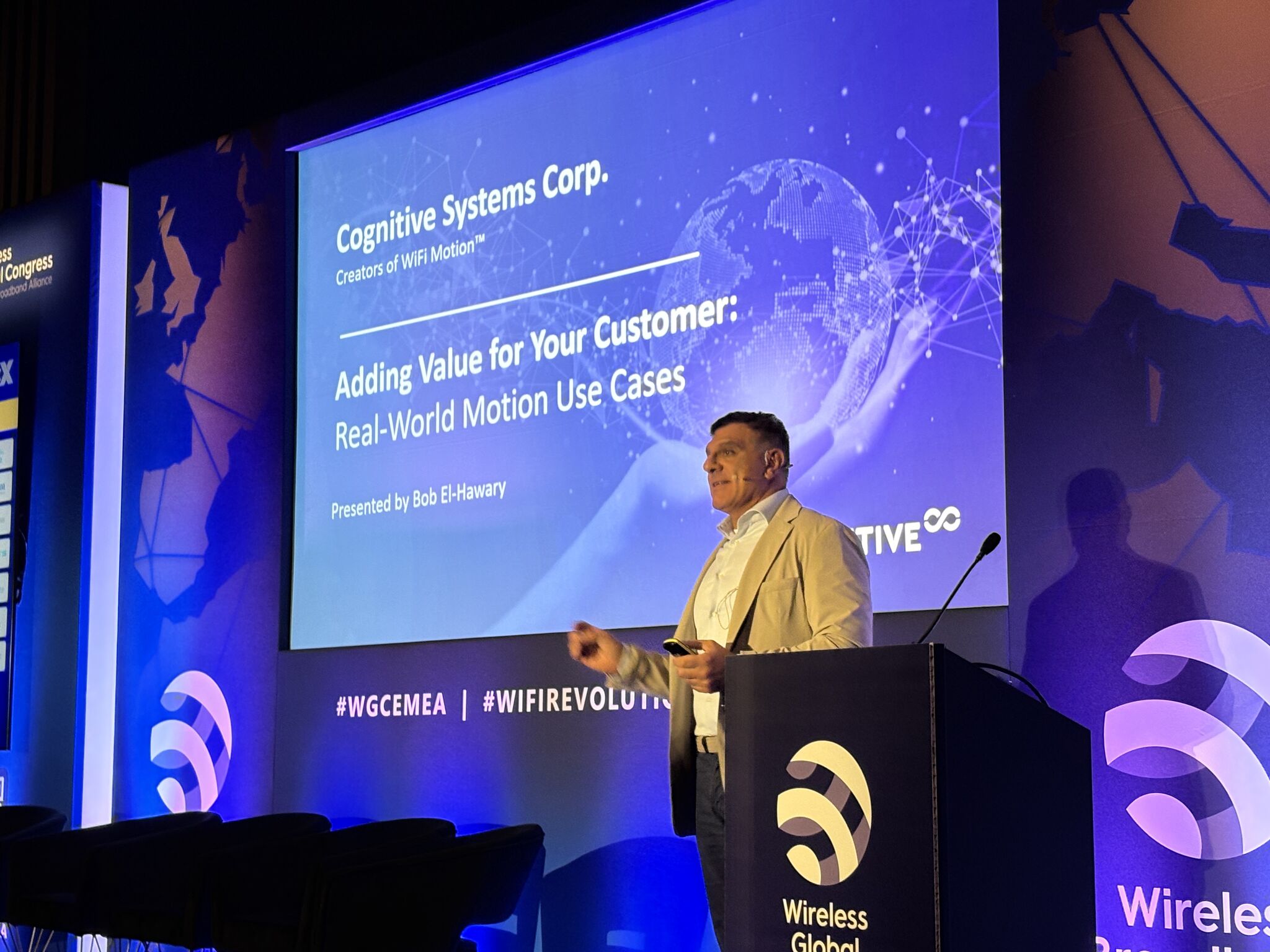At this year’s NetworkX conference, Cognitive’s EVP Sales, Bob El-Hawary, shared a perspective that resonated with many: Wi-Fi networks can do more than connect devices—they can give us meaningful awareness of the spaces we live in. His presentation focused on one of the most rapidly evolving opportunities in the broadband industry: Wi-Fi Sensing. By reframing Wi-Fi as not just a backbone for connectivity, but also a lens into daily life, Bob laid out how service providers can create new value, new revenue, and entirely new ways of engaging with their customers.
From Motion to Meaning
Most people think of motion detection as a binary concept: either something moved, or it didn’t. Bob challenged that thinking by arguing that the real opportunity is context. With Wi-Fi Sensing, like Cognitive’s WiFi Motion, networks can begin to capture patterns of activity rather than isolated blips. That shift is crucial because it’s what transforms an alert from being an interruption into being a useful piece of information. For example:
- Instead of simply detecting “movement at 7 a.m.,” a household can receive a helpful note that the family has started its morning routine
- Instead of just flagging “motion at night,” the system can signal a disruption in sleep—whether that’s a child waking up or a senior leaving their bed
- Instead of vague notifications about “activity,” a homeowner can know if a service professional arrived and how long they stayed
This layering of context is what turns WiFi Motion into something people can rely on in everyday life.
Monetization & Experience: A Dual Opportunity
Bob’s presentation also focused on how Wi-Fi Sensing creates tangible business value for service providers. He outlined four primary paths to monetization:
- Gaining competitive advantage through differentiated, value-added services
- Introducing chargeable features within Wi-Fi Sensing applications
- Upselling from basic to premium broadband tiers by layering home-awareness capabilities
- Addressing specific use cases, such as home care or elder monitoring, that customers are willing to pay for
But monetization, he emphasized, depends on one critical factor: the user experience.
If setup takes too long, users drop off. If alerts are noisy or irrelevant, they disengage. That’s why Cognitive’s approach centers on fast installation (five to ten minutes versus 30+ for competitors) and intuitive placement guidance. For example:
- Home security works best when devices are near entrances
- Eldercare monitoring requires a device in the bedroom and near the bathroom to track sleep patterns and nighttime movement
And when it comes to notifications, less is more. Bob explained that the goal isn’t to flood users with alerts, but to deliver contextually aware messages around meaningful transitions—such as the shift from inactivity to activity, or bedtime to wake time.
Real-World Use Cases
Bob shared how service providers and enterprises are already using Wi-Fi Sensing in practice:
- Home care applications that track daily routines, sleep quality, and household activity patterns
- Peace-of-mind monitoring for families, with insights into arrivals, departures, and unexpected movement
- DIY home security solutions that visualize motion intensity by room, replay movement like CCTV footage, and even support intrusion analysis through motion timelines
Looking Ahead: The AI-Driven Home
To close, Bob looked forward to the next evolution of the connected home: AI integration. By fusing Wi-Fi Sensing data with network intelligence, Cognitive is paving the way for context-aware, conversational interactions within the smart home. Imagine asking, “What’s Johnny doing?” and getting an intelligent, privacy-safe response informed by Wi-Fi Sensing data. This generative AI roadmap opens the door to personalized home interactions, predictive alerts, and even smart home personalities that adapt to household routines.
Bob’s message at NetworkX was clear: WiFi Motion is a present-day differentiator. By focusing on contextual intelligence rather than raw detection, providers can elevate customer experience, unlock new revenue streams, and lay the groundwork for the AI-powered homes of tomorrow. As Bob put it, “The networks of tomorrow won’t just connect us—they’ll understand us.”
To learn more about integrating WiFi Motion into your broadband offerings, contact [email protected].

